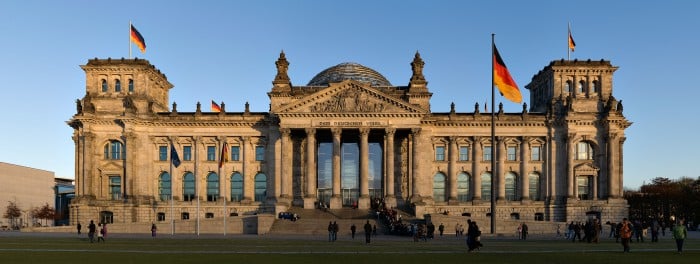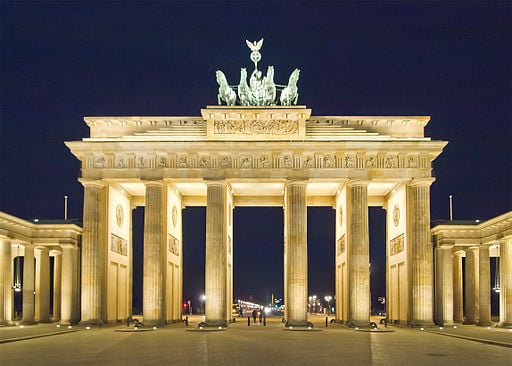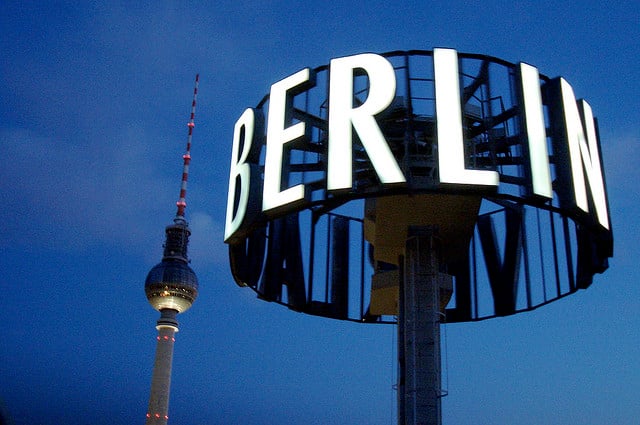5-Minute Guide to Berlin
Berlin is the hippest city to emerge in Europe during the last decade. Young people have taken over the city after its near destruction in WWII and the Cold War and have brought a new energy to the city. Streets are filled with cafés, boutique stores, and creative art projects. As Germany’s capital, it is home to important governmental and cultural buildings and monuments. Berlin is an easy city to navigate, if you know what is important to visit! Here is our 5-minute guide to Berlin that you’re not going to want to miss:

Photo of Reichstag via Wikipedia / Jürgen Matern
Top Sites
The signature attraction in Berlin is the Brandenburg Gate, built in 1791. No trip to Berlin is complete without an iconic photo in front of the old city gate. The modernised Reichstag Government building shows the progress Berlin and Germany have made in the last decade, revitalising the government and economy. If you are an art buff, head to Museum Island and explore the city’s most important art exhibits spanning over 6,000 years of art: the Altes Museum, the Neues Museum, the Bode Museum, the Pergamon Museum, and the Alte Nationalgalerie. The remnants of the Berlin Wall still stand today at the Berlin Wall Memorial now covered in art to commemorate the falling of the wall in 1989. Another powerful glimpse into Germany’s history is at the Holocaust Memorial, which commemorates the people killed in the Holocaust through cinderblocks.

Photo of Brandenburg Gate via Wikipedia / Pedelecs
Weather
Berlin’s harsh winters are made up for by its beautiful temperatures Spring, Summer, and Fall. December, January, and February are the coldest months, so bring a warm jacket! Snowfall is frequent, however does not last for long each storm. Summer weather is pleasantly warm and not too hot, so escape outside and relax in one of the city’s biergartens or parks. You can even head to the “beach” along the riverbank of the Spree! Enjoy the changing of the leaves in during the equinoxes, where there are many events in the city like light festivals and concerts.
Transportation
Berlin’s transportation is some of the best in the world. The famous U-bahn underground metro system is fast and efficient. The ticket system is an honour code, so make sure you buy and stamp your ticket before you ride unless you want to get fined by undercover security during your ride! The tram system also runs throughout the city, so you can sight-see as you travel. Buses are also readily available. Biking is one of the most common modes of transportation, where bike lanes are strictly enforced and riders do not slow down for pedestrians crossing out of line. Make sure you watch your step while you are walking! Many of the downtown sites like the Brandenburger Gate and Museum Island are within easy walking distance.

Photo of Berlin via Flickr/ m.a.r.c.
Language
Berlin is a very international city, so it is common to hear a variety of languages as you walk around the city. Many citizens speak English; however it is common and preferred to try and speak German to staff in restaurants or bars. Many signs will be posted in German and English to help travellers. The Berlin dialect of German has a few key differences than textbook “High German.” One of the most noticeable difference is the word “!” which is pronounced “Ick” instead of “Ich.” Another trait in Berlin is that they pronounce “au” as “oo” sound. For example “kaufen” (to buy) is pronounced “koofen.” To start practising your German before your trip to Berlin, first take our German level test if you have any language background. Then you can choose your best German language course option to prepare for your exciting cultural immersion in Berlin!
